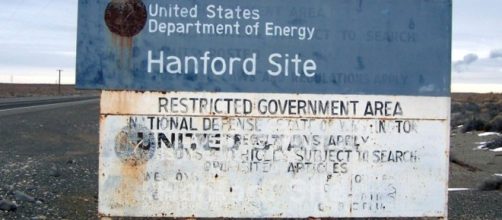On Tuesday, an emergency was declared at the Hanford Nuclear Reservation located in Washington State after a storage tunnel collapsed. Hanford is half the size of Rhode Island and located 200 miles south of Seattle. No workers were injured and as of now, there have been no reports of any radiation release. The 500-square mile Hanford reservation was established by the Manhattan Project during World War Ii to make plutonium, a key ingredient in nuclear weapons.
Tunnel contained with radioactive particles
CBS News reports that the collapsed tunnel stored contaminated particles and radioactive train cars.
The area was 20 feet-by-20 feet and sits over a tunnel hundreds of feet long that was built during the Cold War.
A United States Department of Energy spokesman said Thursday that the large sinkhole responsible for the collapsed tunnel may have gone unnoticed for days. The tunnel is filled with radioactive waste that dates back to World War II.
Because the tunnel is not checked on a daily basis there is no telling how long it has been leaking, but officials say it could have been leaking for at least four days.
Infrequent inspections
Washington officials were surprised to learn that inspections of the tunnel were made on an infrequent basis. Alex Smith, who helps regulate the Hanford site, from the Washington state Department of Ecology, said that it was unacceptable that the tunnel could have been exposed for four days.
Rick Perry, U.S. Energy Secretary said the next step. After filling the hole to prevent further leakage, is to implement measures to reduce the risk of future problems.
Unsafe storage facilities
Unfortunately, Kevin Kamps from Beyond Nuclear, an anti-nuclear group, said Hanford is not an isolated incident and that the crisis is far from over. Kamps added that time is running out for the U.S. Toxic waste from the 60's is being stored in precarious and unsafe storage facilities.
In 2015 a report commissioned by the U.S. Energy Department warned officials that tunnels both Hanford tunnels were unstable and at risk of collapsing either from deterioration or earthquake and that the building materials would corrode over time due to intense radiation.
56 million gallons of waste
Dangerous waste materials are stored in 177 underground tanks holding 56 million gallons of radioactive materials. Cleanup of all the Hanford facilities is expected to continue until 2060. The estimated cost of the cleanup would be an additional $100 billion over the already $19 billion spent.


